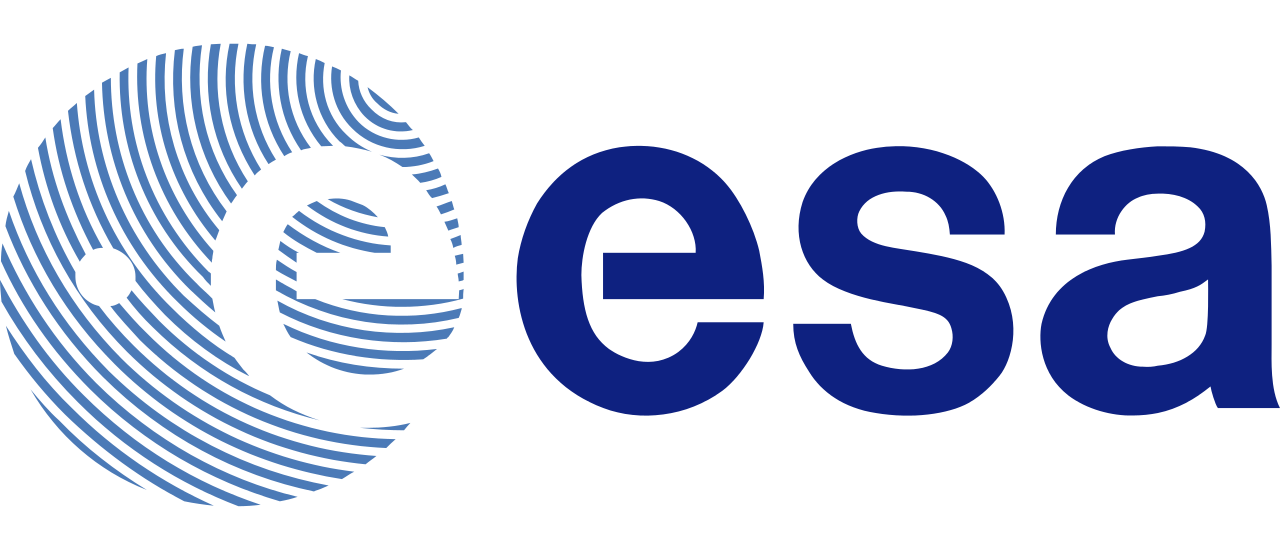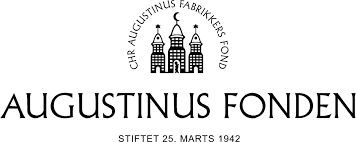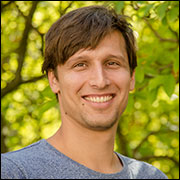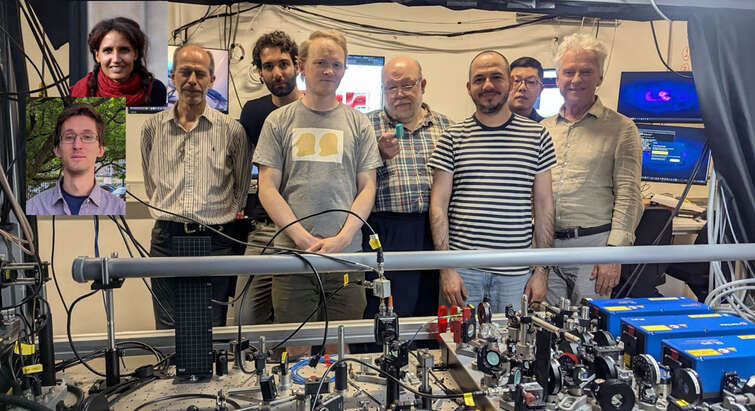
Quantum Metrology
The interaction between a stable laser and the quantized level structure of an atom is the working principle in an atomic clock, a technology that is now so precise that it only loses one second over the entire 13.8 billion year lifetime of the universe.
In the Quantum Metrology group we investigate the properties of such atomic clocks and work to improve them or develop the next generation systems. We focus especially on Cavity-enhanced systems and Cavity-QED, for either passive atomic interrogation or the realization of active superradiant lasing schemes.
Precision measurements with ultracold atoms uses quantum physics to make precise measurements by means of quantum optics. The ultra-precise quantum optical measurements range from precision measurements of the physical structure of atomic nuclei to research on ultra-precise atomic clocks, which can be used for navigation and space missions.
In our group we operate two experiments. Strontium 1 is a pulsed experiment where atoms are trapped, cooled and interrogated approximately once a second. The atoms are trapped in the center of the optical cavity and interact through the cavity mode. We study the dynamics of the combined atom-cavity system (cavity QED), and utilize the strong coupling to produce superradiant laser pulses. Superradiant lasers operate in the so-called bad cavity regime, where the photons leak out of the cavity much faster than the atoms emit into the cavity. In this regime, the lasing is sustained due to collective effects in the atomic ensemble mediated by the cavity mode. The laser phase information is stored in the continuous synchronization of atomic phases rather than in the intra cavity field. Consequently, superradiant lasers are resistant to vibrations in the cavity mirrors, overcoming a major limitation in current state-of-the-art atomic clocks. On this experiment we have recently achieved record low linewidths of the superradiant laser light compared to the linewidth of the lasing transition, which demonstrates the great potential of fully continuous superradiant lasers.
Loading of atoms into the optical cavity through a two-stage magneto-optical trap in the Strontium 1 experiment
Our second experiment Strontium 2 uses a different approach than Strontium 1. Rather than periodically cooling, trapping and interrogating atoms, this experiment has a beam of atoms travelling through an optical cavity to allow for continuous interrogation. Continuous interrogation eliminates the Dick effect (a limitation caused by a finite rate of interrogation), which is a fundamental problem in atomic clocks, where the atoms are only interrogated every second. The experiment has exciting prospects for continuous cavity-enhanced passive atomic phase interrogation, and with a sufficiently high atomic flux the system will be capable of continuous lasing. A future prospect for this experiment is to directly compare it to the lasing produced on Strontium 1, for the first ever comparison between two superradiant lasers.

A continuously cooled beam of atoms moving through the vacuum chamber on Strontium 2
Interested in doing your masters project in the area of Atomic, Molecular and Optical (AMO) physics?
In the Quantum Metrology group we have several available Bachelors and Masters projects. We are looking for driven and ambitious master students to do these projects in close collaboration with Ph.D.-students and Postdocs.
In collaboration with the European Space Agency and as part of an EU-wide collaboration on atomic clocks, we seek to generate frequency stable laser sources using ultracold strontium. The main goal is to establish an ultra-stable reference laser, a so-called local oscillator, which may be employed in state-of-the-art optical atomic clocks.
We follow several different approaches to this end, and currently have two active experiments using cold strontium atoms. In both experiments we have the possibility of following a strategy with the atoms acting as passive or active components in obtaining the narrow spectral features we are after.
The passive approach uses the atoms inside an optical cavity as a frequency discriminator, whereas the active approach uses the quantization of the atoms and coupling field to achieve so-called superradiant lasing. In superradiance a large group of excited atoms placed closely together may phase lock and give of a burst of light on time scales significantly below the natural life time of the excited state. This phenomenon may be enhanced by placing the atoms in a high finesse cavity and may lead to exceedingly narrow frequency references. Furthermore, rather than being a single burst of photons, we contemplate to generate a continuous superradiance by employing a beam of atoms. The project is experimental and will involve fundamental quantum physics, optics, quantum optics, atomic physics, laser physics, measurement and control.
- Superradiant laser
- Continuous superradiant laser
- Collective effects in strontium
Please contact Stefan A. Schäffer at schaffer@nbi.ku.dk if you are interested in doing a project with us, or want to hear more about them.
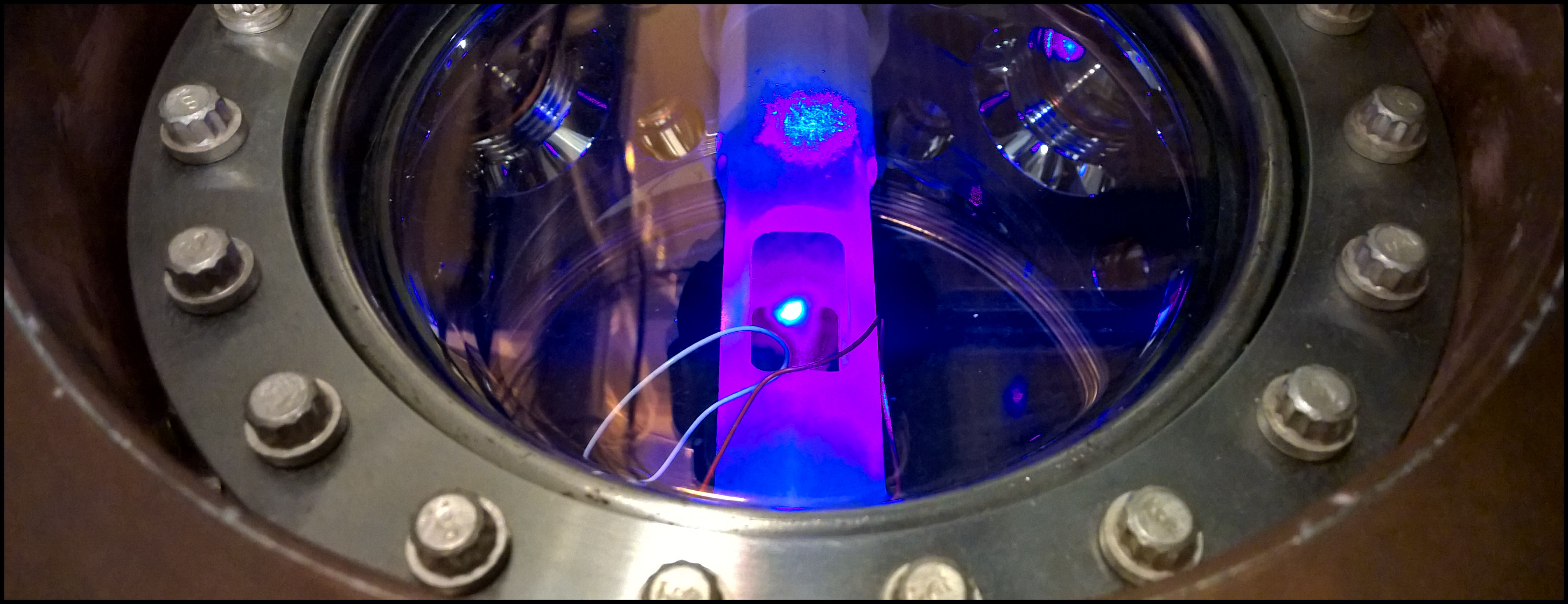
Recent publications:
- Collectively enhanced Ramsey readout by cavity sub- to superradiant transition, Nature Communications 15, 1084 (2024),
- Sub-Natural Linewidth Superradiant Lasing with Cold 88 Sr Atoms, Physical Review Letters 130, 223403 (2023)
- Prospects of a superradiant laser based on a thermal or guided beam of 88 Strontium, Physical Review A 106 (6), 063704 (2022)
- Petabit-per-second data transmission using a chip-scale microcomb ring resonator source Nature Photonics 16 (11), 798-802 (2022)
- Cavity-immune spectral features in the pulsed superradiant crossover regime Physical Review Research 3 (3), 033258 (2021)
- Lasing on a narrow transition in a cold thermal strontium ensemble: Phys. Rev. A 101, 013819 (2020)
- Selected for the PRA Kaleidoscope: https://journals.aps.org/pra/
kaleidoscope/pra/101/1/013819
- Selected for the PRA Kaleidoscope: https://journals.aps.org/pra/
- AEDGE: Atomic Experiment for Dark Matter and Gravity Exploration in Space: EPJ Quantum Technology, 7, 6 (2020), arXiv:1908.00802.
- High-quality factor, high-confinement microring resonators in 4H-silicon carbide-on-insulator, Optics Express Vol. 27, Issue 9, pp. 13053-13060 (2019).
- SAGE: A Proposal for a Space Atomic Gravity Explorer, Eur. Phys. J. D 73, 228 (2019), arXiv:1907.03867.
We gratefully acknowledge financial support over the years from the following sources:
|
Novo Nordisk Foundation |
||
|
|
QuantERA: EU Horizon 2020 reaearch and innovation programme under Grant Agreement No 731473 |
|
|
European Space Agency |
The Augustinus foundation |
|
|
The Brothers Hartmann foundation |
The Siemens foundation |
|
|
European Metrology project 17FUN03 under the EMPIR initiative |
The European Union’s Horizon 2020 research and innovation programmeunder grant agreement No 820404 (iqClock project). |
Available Post Doc. and Ph.D. positions
We are always looking for motivated and dedicated students with an interest in quantum mechanincs, atomic physics, optomechanincs, quantum memories laser physics, quantum information.
For information please contact Stefan A. Schäffer (schaffer _at_ nbi.ku.dk).
Bachelor and Master Project opportunities
Please contact Stefan A. Schäffer (schaffer _at_ nbi.ku.dk) if you are interested.
PhD positions
Please contact Stefan A. Schäffer (schaffer _at_ nbi.ku.dk) for more information.
PostDoc positions
Please contact Stefan A. Schäffer (schaffer _at_ nbi.ku.dk) if you are interested.
Updates
|
2024.04.24 Read the Press on our Ramsey spectroscopy paper here: University of Copenhagen Press release (English) |
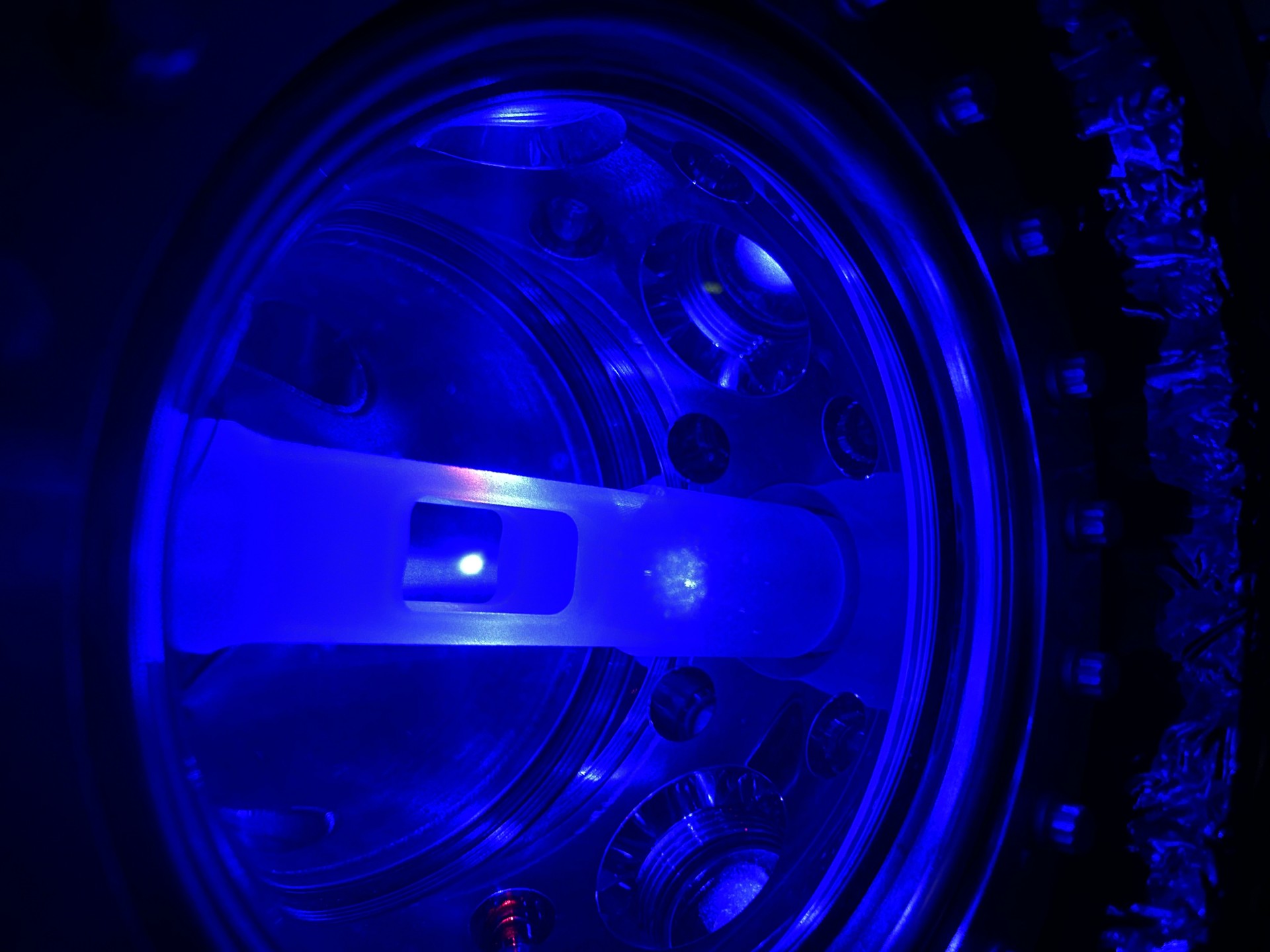 |
|
2024.02.10 Our paper on exploting sub- to -superradiant phase transitions for state detection in cavity-ensembles was published in Nature Communications: Collectively enhanced Ramsey readout by cavity sub- to superradiant transition Eliot A. Bohr, Sofus L. Kristensen, Christoph Hotter, Stefan A. Schäffer, Julian Robinson-Tait, Jan W. Thomsen, Tanya Zelevinsky, Helmut Ritsch & Jörg H. Müller, Nature Communications volume 15, Article number: 1084 (2024) |
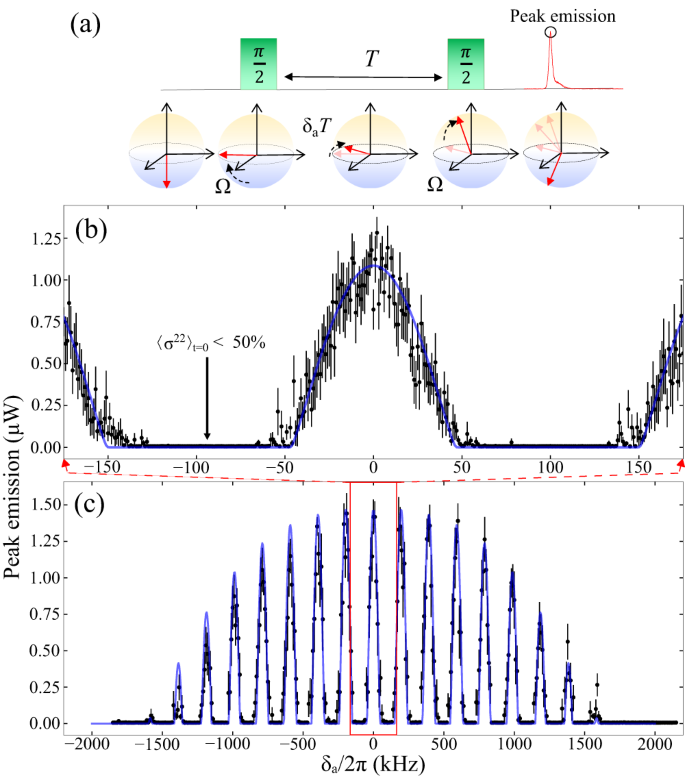 |
|
2024.02.07 We had the pleasure of recieving a number of young and eager students for the occasion of the "Girls day in science". In the video you see our Master student Andrea Sommer Eriksen, showing offt the Strontium experiment. |
|
|
2023.11.16 Sofus Laguna Kristensen successfully defended his thesis entitled "Narrow linewidth superradiant lasing with cold 88Sr". The thesis details the development of a system for trapping and cooling large ensembles of strontium, allowing for record long continuously repumped superradiant pulses. |
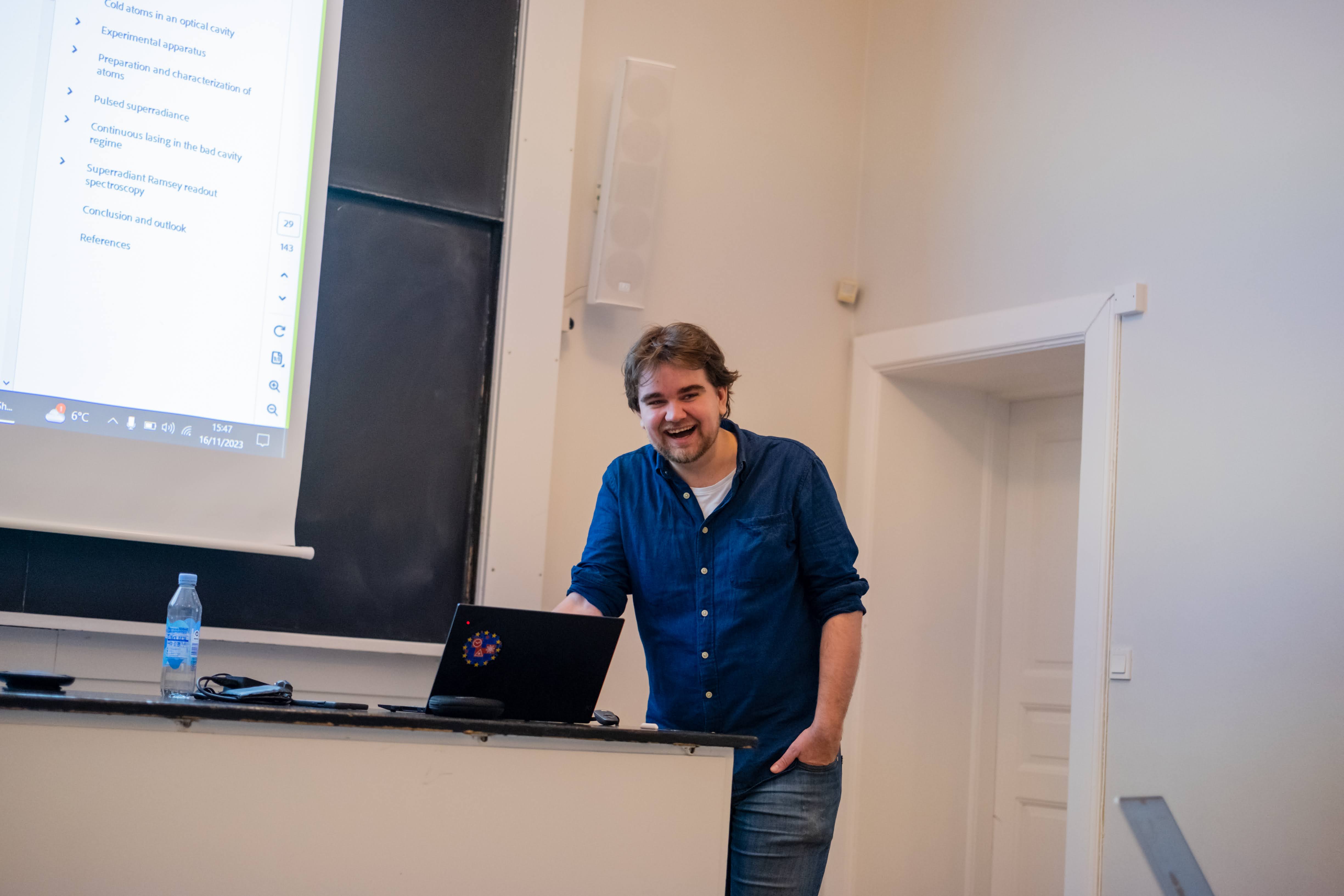 |
|
2023.10.30 Eliot Bohr just defended his PhD thesis entitled "Exploring superradiance for enhanced sensors". Congratulations! |
|
|
2023.07.30 -- ICOLS 2023 poster prize: Congratulations to Sofus L. Kristensen for recieving the Poster Prize at this years ICOLS! |
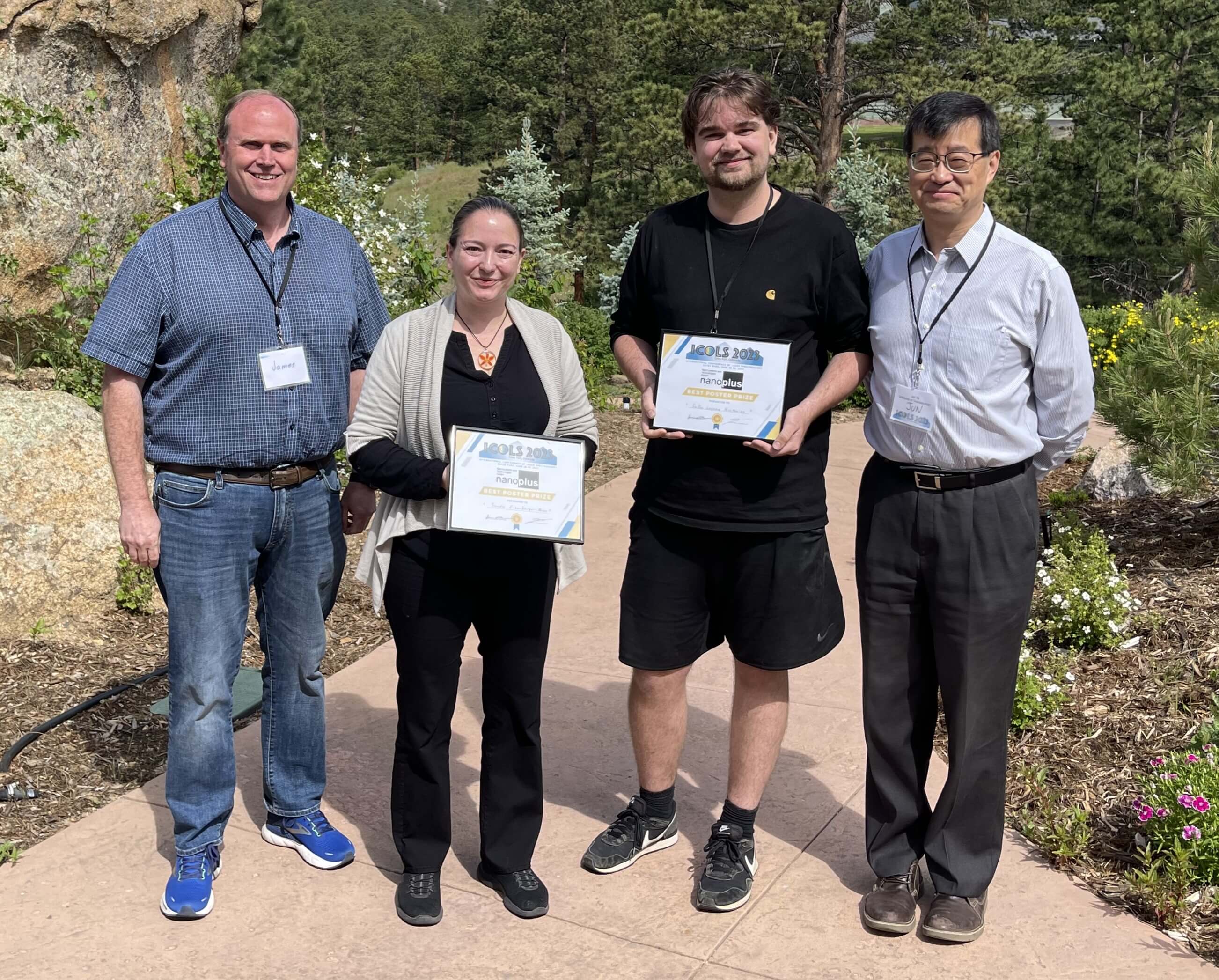 |
|
2023.06.21 -- New paper on arXiv E. Bohr, S. L. Kristensen, C. Hotter, S. Schäffer, J. Robinson-Tait, J. W. Thomsen, T. Zelevinsky, H. Ritsch, J. H. Müller: Collectively enhanced Ramsey readout by cavity sub- to superradiant transition. 2023. arXiv: 2306.12544. We just uploaded a preprint to arXiv! In this paper we report on our demonstration of a Ramsey interferometer where the atomic state readout is realized through the emission of a superradiant pulse. Compared to traditional atomic state readout methods, this technique is fast and non-destructive to the atomic ensemble. |
|
|
2023.06.2 -- Talk at IEEE IFCS-EFTF 2023: Our PhD student Eliot Bohr gave a talk at this years IEEE IFCS-EFTF conference in Toyama, Japan. You can find the talk on via Eliots own channel on youtube here |
|
|
2023.05.31 -- Quasi-continuous Superradiance paper published in PRL: We demonstrate that steady-state superradiant lasers can have a linewidth far below the natural linewidth of the optical transitions they rely on. |
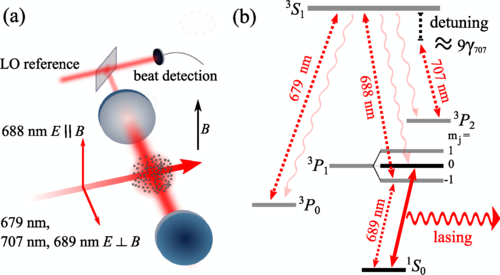 |
Stefan Alaric Schäffer, Assistant Professor
Office: Building Q, Qa-6
Cell phone: +45 50544824
E-mail: schaffer@nbi.ku.dk
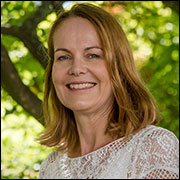 Charlotte Hviid, Administrative coordinator
Charlotte Hviid, Administrative coordinator
Niels Bohr Institute
Blegdamsvej 17
2100 København Ø.
Office: Bygning T, Ta2a
E-mail: hviid@nbi.ku.dk
Phone: +45 353-25254
Group staff
Jörg H. Müller, Assoc. Professor
Stefan A. Schäffer, Ass. Professor
Phone: +45 50544824
E-mail: schaffer@nbi.ku.dk
Staff
| Name | Title | |
|---|---|---|
| Search in Name | Search in Title | |
| Hviid, Charlotte | Special Consultant |
|
| Kristensen, Sofus Laguna | Postdoc |
|
| Müller, Jörg Helge | Associate Professor |
|
| Schäffer, Stefan Alaric | Assistant Professor |
|
| Thekkeppatt, Premjith | Postdoc |
|
News on Quantum Optics

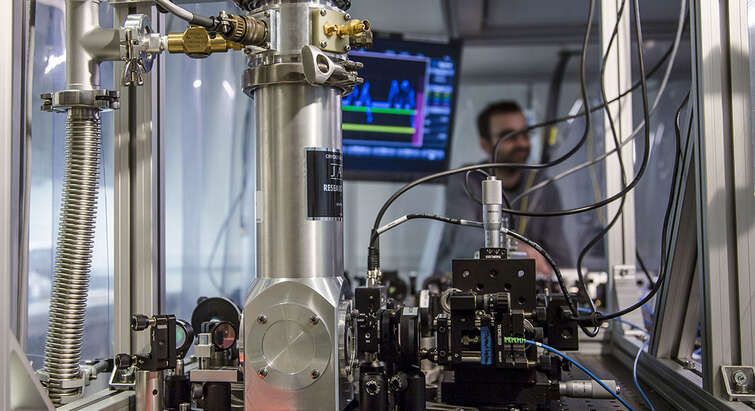

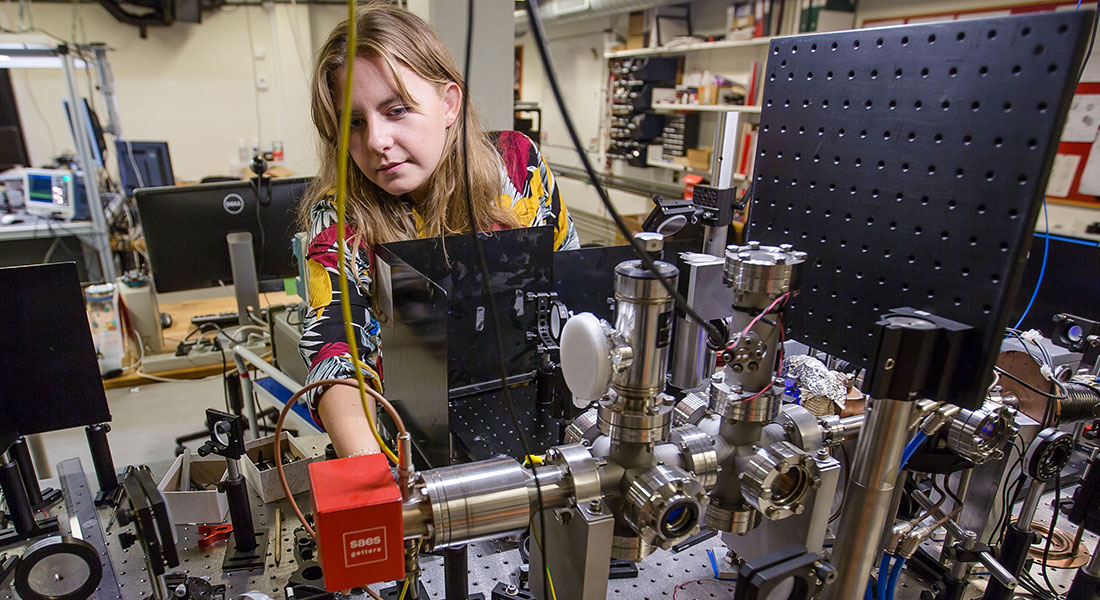

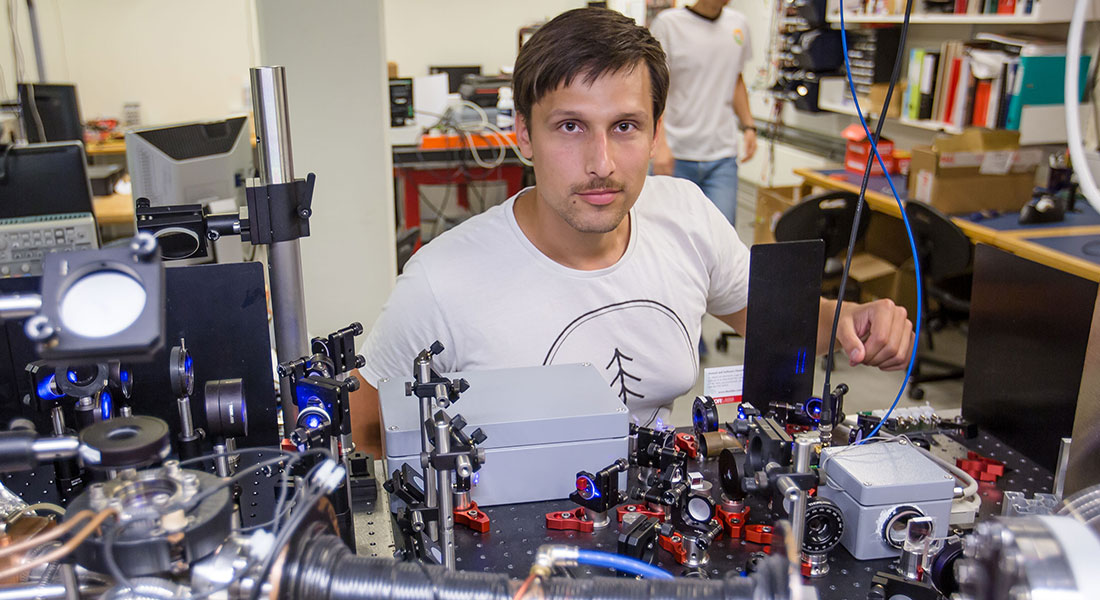
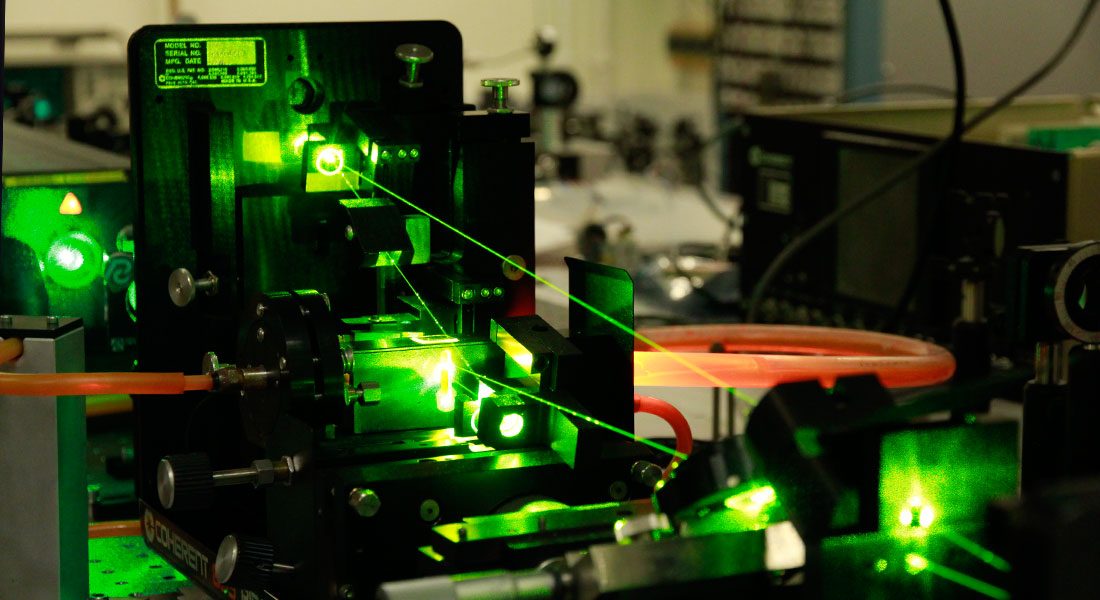
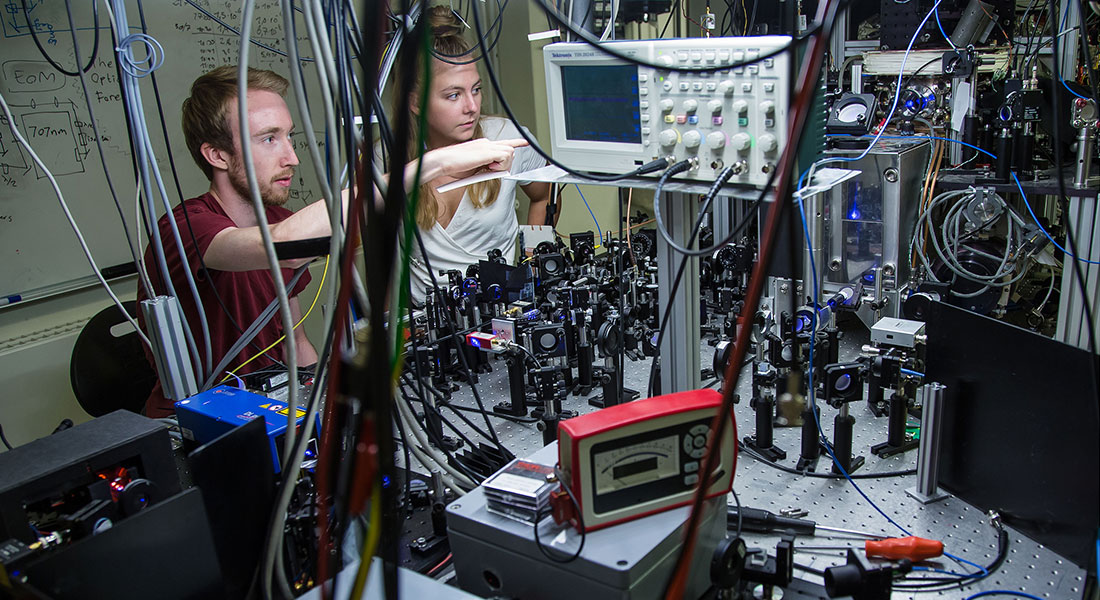
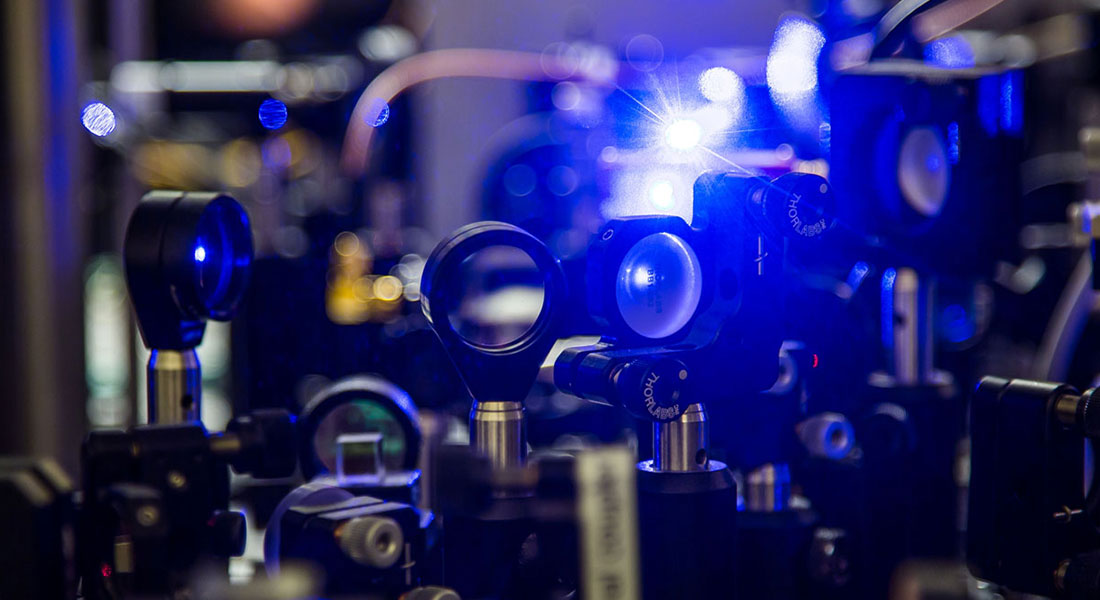


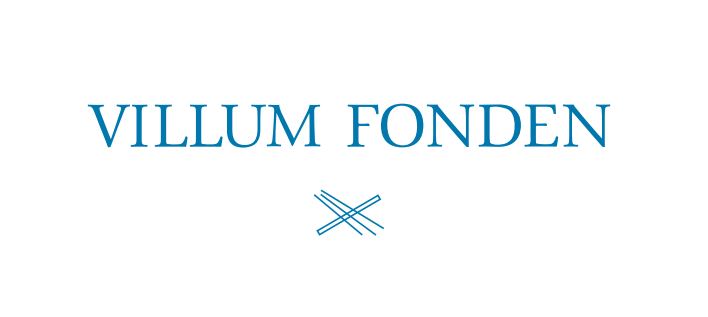 Villum Foundation
Villum Foundation
